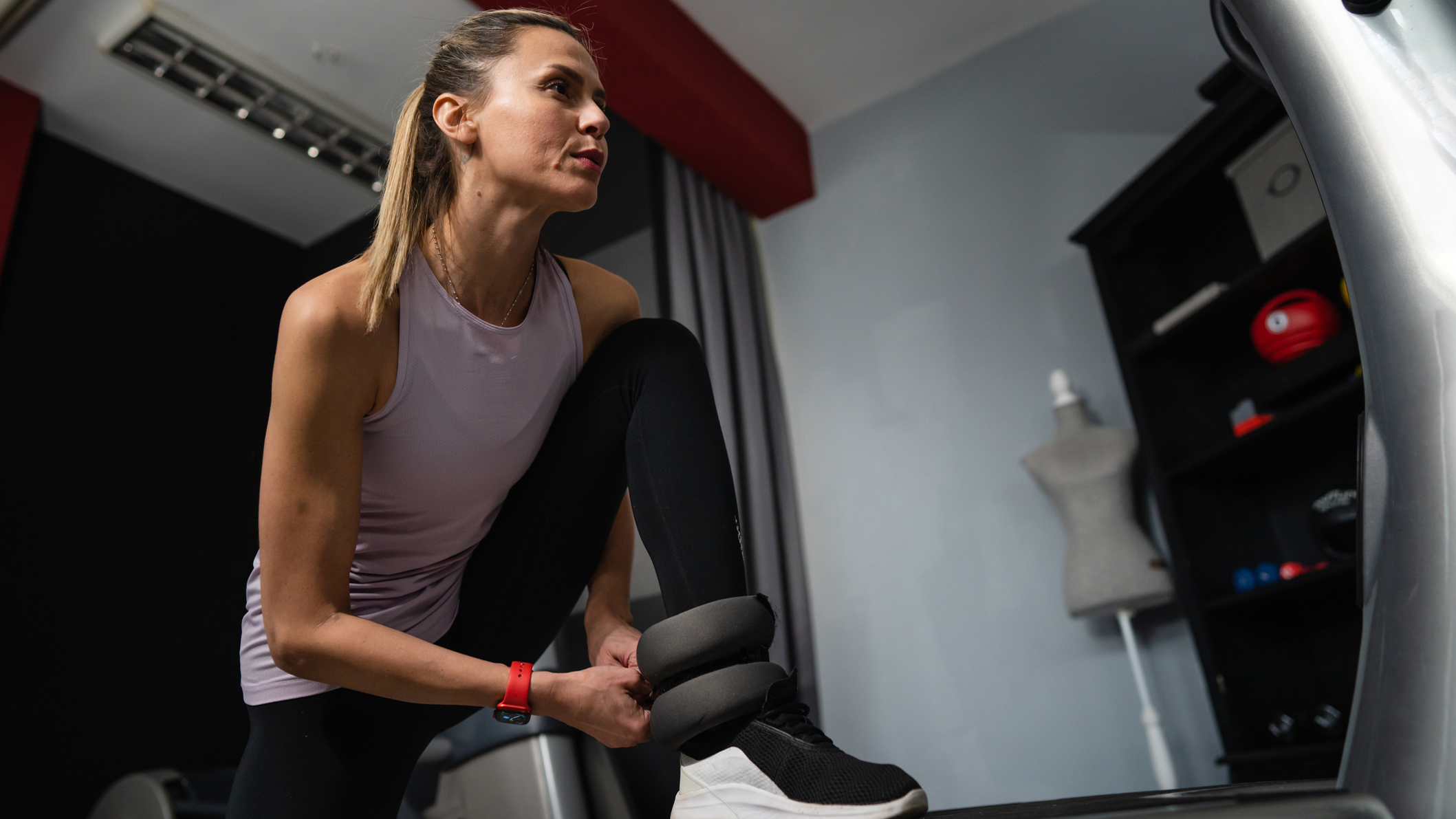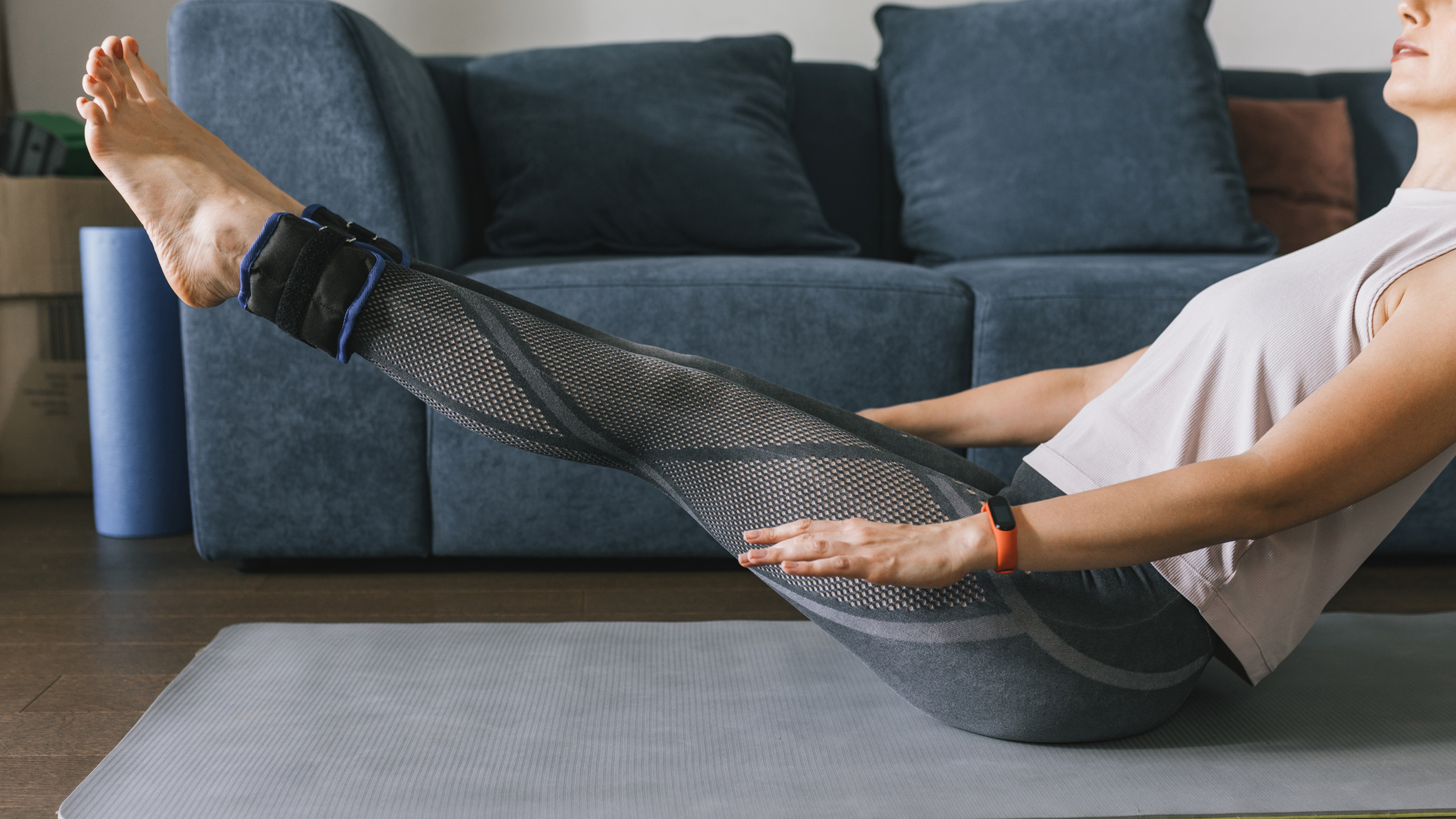Are there any benefits to wearing ankle weights? We asked a strength training expert
According to the trainer, using ankle weights correctly can increase the intensity of your exercise and improve muscle strength

If your goal has ever been to build strength and increase muscle mass, the chances are you’ll have used a dumbbell or kettlebell to provide extra resistance.
Reaching for heavy equipment is a good move. However, another way to increase the intensity—and effectiveness—of your workout is by using ankle weights.
Although they may look light and ineffective, ankle weights can help build lower-body muscle. Some studies suggest that they could help with body composition, too. Lucie Cowan, a coach and a master trainer at Third Space London, tells us more.

Lucie Cowan is a master trainer at Third Space, London, who specializes in strength training and metabolic conditioning. In addition to her training qualifications, she holds three medical science degrees, a Bachelors (BSc), a Masters (MSc) and a Doctorate (PhD).
What are the benefits of ankle weights?
Like any resistance tool, ankle weights can make your workout more challenging. The muscles you engage with that resistance will depend on the exercise you're doing, but Cowan says that ankle weights usually cause the calves, thighs and glutes to work a little bit harder.
Working harder will eventually force those muscles to get stronger, so the weights are an effective strength training tool. But they could provide a cardio challenge, too.
“Ankle weights can elevate the intensity of exercises like walking, high knees and mountain climbers, turning them into cardiovascular workouts,” says Cowan.
This leads us into a more surprising benefit of ankle weights: they could actually change your body composition. Studies are fairly sparse, but this one from the Journal of Taibah University Medical Sciences showed that using ankle weights regularly could lower body fat.
Start your week with achievable workout ideas, health tips and wellbeing advice in your inbox.
Participants in the study wore ankle weights everyday, for 20 minutes, while going about their usual activities. After six weeks, there were significant changes in their body fat and waist circumference—but BMI stayed the same.
The thinking is that wearing ankle weights could increase the intensity of your usual workout and daily activities. This means that your body is going to be working harder to keep up with the demand placed on your legs, and burn more calories (and potentially body fat) as a result.
That said, there aren't many studies into the practice, and Cowan advises that you should be mindful before adding them into your daily routine.

When should you wear ankle weights?
Cowan suggests strapping ankle weights on for Pilates-inspired moves like leg circles, scissor kicks, side-lying leg lifts and seated leg press, if you want to use them effectively.
You could also try walking with weights, to turn your afternoon stroll into a gentle cardio and strength training session. However, Cowan cautions that you shouldn't leap straight into using the weights for long periods of time.
“If you’re new to walking or have any joint or muscle issues, it's important to ease yourself in and build up before incorporating ankle weights into your regime,” says Cowan.
In fact, continuous use of ankle weights could place excessive stress on your joints and ligaments, potentially leading to overuse injuries.
“To avoid strain, aim to alternate days and give your legs ample time to recover,” says Cowan.
Will walking with weights tone your legs?
Ankle weights add resistance when you walk, putting extra stress on your leg muscles and encouraging them to work harder. This could lead to some strength improvements, but it's unlikely you'll see much change in muscle mass from walking alone.
“For comprehensive results, consider including regular strength training to create a well-rounded fitness routine," advises Cowan.
Try tackling this lower-body dumbbell workout once or twice a week, if you want to work on your muscle mass and see improvement in leg tone.
What are the disadvantages of ankle weights?
Wearing ankle weights that are too heavy for you can negatively affect things such as walking gait, posture and form, which may lead to imbalances and discomfort. The key is to start with lighter weights and slowly increase the load as your strength and endurance builds.
Cowan recommends some people exercise caution when using ankle weights or avoid them altogether, particularly if you experience health conditions, such as arthritis or have knee problems.
This is backed up by a study published in the Journal of Physical Therapy Science that investigated the effects of wearing ankle weights on knee joints in the elderly and found that weights that were too heavy for the participants might disturb knee joint positioning sense.
If you want to elevate your walking routine and strengthen your leg muscles, ankle weights are an effective and easy-to-implement addition to some workouts—though use caution, as Cowan says. “To get the most out of ankle weights safely, use them mindfully, gradually increase resistance and remember to prioritize rest days.”
Daniella Gray is an experienced health and wellbeing writer, and was an Editorial Assistant and Senior Content Writer at Health & Wellbeing magazine, where she got to explore her love of food and fitness. She holds a degree in Print Journalist from Nottingham Trent University and a NCTJ qualification.